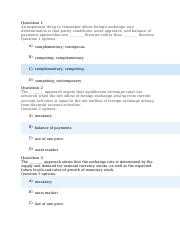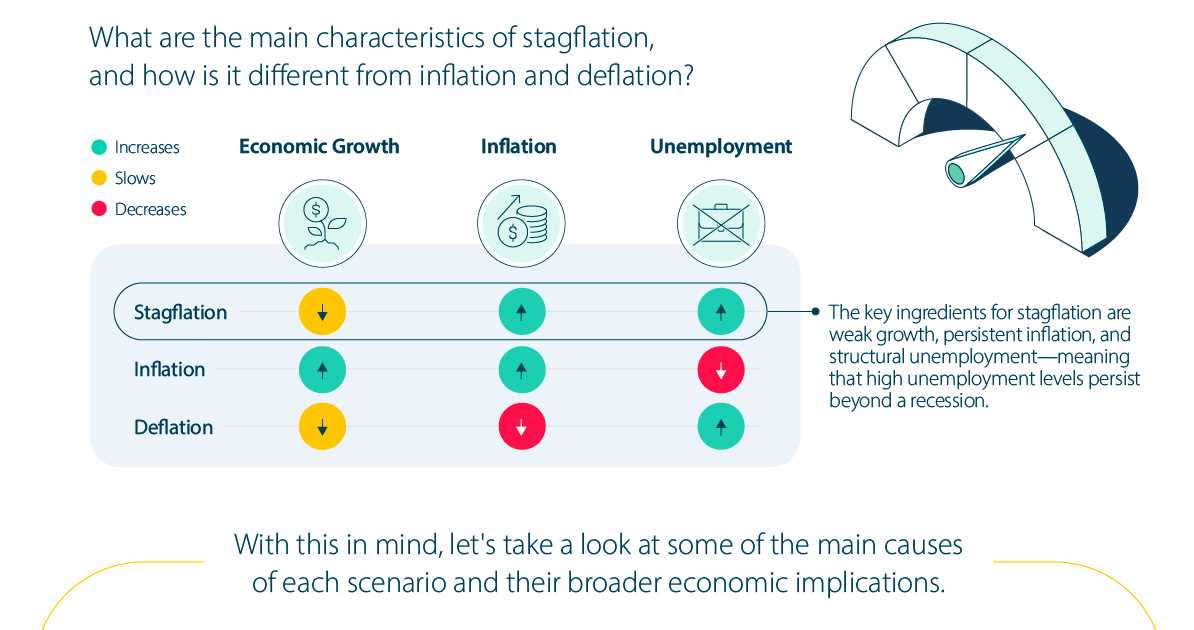Definition of Disinflation
Disinflation refers to a decrease in the rate of inflation, which means that the general level of prices is still rising, but at a slower pace compared to the previous period. It is important to note that disinflation is different from deflation, as deflation refers to a sustained decrease in the overall price level.
Disinflation occurs when the rate of inflation falls below the previous period’s rate, but it remains positive. This means that prices are still increasing, but at a slower rate. Disinflation can be seen as a temporary slowdown in the rate of price increases.
Causes of Disinflation

Disinflation can be caused by various factors, including:
- Monetary Policy: Central banks can implement contractionary monetary policies to reduce inflation. This can be done by increasing interest rates, reducing the money supply, or implementing other measures to tighten monetary conditions. These actions can help slow down the rate of price increases and lead to disinflation.
- Supply and Demand Factors: Disinflation can also be influenced by changes in supply and demand conditions. For example, if there is a decrease in demand for goods and services, it can lead to a decrease in prices and contribute to disinflation. Similarly, if there is an increase in the supply of goods and services, it can also put downward pressure on prices and result in disinflation.
- External Factors: Disinflation can also be influenced by external factors such as changes in exchange rates or commodity prices. For example, if a country’s currency appreciates, it can lead to lower import prices, which can contribute to disinflation. Similarly, if there is a decrease in the price of key commodities, it can also lead to disinflation.
Impact of Disinflation

Disinflation can have both positive and negative impacts on the economy. On the positive side, disinflation can help reduce inflationary pressures and improve the purchasing power of consumers. It can also lead to lower interest rates, which can stimulate borrowing and investment. Additionally, disinflation can help stabilize prices and provide a more predictable environment for businesses and consumers.
Conclusion
Disinflation is a decrease in the rate of inflation, where prices are still rising but at a slower pace. It can be caused by various factors, including monetary policy, supply and demand conditions, and external factors. Disinflation can have both positive and negative impacts on the economy, and its effects depend on the underlying causes and the overall economic conditions. It is important for policymakers to carefully manage disinflation to ensure a balance between price stability and economic growth.
Mechanisms of Disinflation
1. Monetary Policy
One of the main mechanisms through which disinflation can be achieved is monetary policy. Central banks have the power to influence the money supply and interest rates, which in turn can impact inflation. By implementing contractionary monetary policy, central banks can reduce the money supply and increase interest rates, which can help slow down inflationary pressures.
For example, a central bank may increase the reserve requirements for commercial banks, making it more difficult for them to lend money. This reduces the amount of money available in the economy, leading to a decrease in aggregate demand and ultimately lowering inflation.
2. Fiscal Policy
Fiscal policy, which involves government spending and taxation, can also play a role in disinflation. By reducing government spending or increasing taxes, policymakers can decrease aggregate demand and put downward pressure on prices.
For instance, if the government implements austerity measures, such as cutting public sector wages or reducing social welfare programs, it can lead to a decrease in overall spending. This decrease in aggregate demand can help slow down inflationary pressures and contribute to disinflation.
3. Supply-Side Policies
Supply-side policies focus on increasing the productive capacity of an economy, which can help alleviate inflationary pressures. By improving the efficiency and productivity of industries, supply-side policies can increase the supply of goods and services, which can help stabilize prices.
For example, implementing policies that promote investment in technology and infrastructure can lead to increased productivity and lower production costs. This can result in a greater supply of goods and services, reducing the upward pressure on prices and contributing to disinflation.
4. Wage and Price Controls
Another mechanism that can be used to achieve disinflation is the implementation of wage and price controls. These controls involve setting limits on the amount by which wages and prices can increase, effectively capping inflationary pressures.
However, wage and price controls can have unintended consequences and may not be sustainable in the long term. They can lead to distortions in the economy, such as shortages or surpluses of goods and services, as well as reduced incentives for productivity and innovation.
5. Expectations and Credibility
Expectations and credibility play a crucial role in disinflation. If individuals and businesses expect inflation to decrease in the future, they may adjust their behavior accordingly, which can help bring down inflationary pressures.
Central banks and policymakers need to communicate effectively and build credibility to influence expectations. By maintaining a consistent and transparent monetary policy, central banks can shape inflation expectations and create an environment conducive to disinflation.
| Mechanism | Description |
|---|---|
| Monetary Policy | Central banks influence the money supply and interest rates to control inflation. |
| Fiscal Policy | Government spending and taxation can impact aggregate demand and inflation. |
| Supply-Side Policies | Policies aimed at increasing the productive capacity of an economy to stabilize prices. |
| Wage and Price Controls | Setting limits on wage and price increases to cap inflationary pressures. |
| Expectations and Credibility | Managing expectations and building credibility to influence inflationary pressures. |
Triggers of Disinflation
1. Monetary Policy
One of the primary triggers of disinflation is changes in monetary policy. Central banks have the power to influence the money supply and interest rates, which in turn affect inflation. When the central bank tightens monetary policy by increasing interest rates or reducing the money supply, it can slow down economic activity and reduce inflationary pressures. This can lead to disinflation as prices rise at a slower pace.
2. Fiscal Policy
Fiscal policy, which involves government spending and taxation, can also be a trigger of disinflation. If the government implements contractionary fiscal policies, such as reducing government spending or increasing taxes, it can have a dampening effect on aggregate demand. This can lead to lower inflation rates as consumer spending and investment decrease.
3. External Factors
Disinflation can also be triggered by external factors, such as changes in global commodity prices or exchange rates. For example, if the price of oil, which is a key input in many production processes, decreases significantly, it can lead to lower production costs and lower inflation. Similarly, if a country’s currency appreciates, it can make imports cheaper and reduce inflationary pressures.
4. Technological Advancements

Technological advancements can also play a role in triggering disinflation. Improved productivity and efficiency resulting from technological innovations can lead to lower production costs, which can translate into lower prices for goods and services. Additionally, advancements in e-commerce and online platforms can increase price transparency and competition, putting downward pressure on prices.
5. Demographic Changes
Demographic changes, such as an aging population or changes in labor force participation rates, can also impact inflation rates. An aging population typically has lower consumption and higher savings rates, which can reduce aggregate demand and inflationary pressures. Similarly, changes in labor force participation rates can affect wage growth and overall inflation levels.

Emily Bibb simplifies finance through bestselling books and articles, bridging complex concepts for everyday understanding. Engaging audiences via social media, she shares insights for financial success. Active in seminars and philanthropy, Bibb aims to create a more financially informed society, driven by her passion for empowering others.
